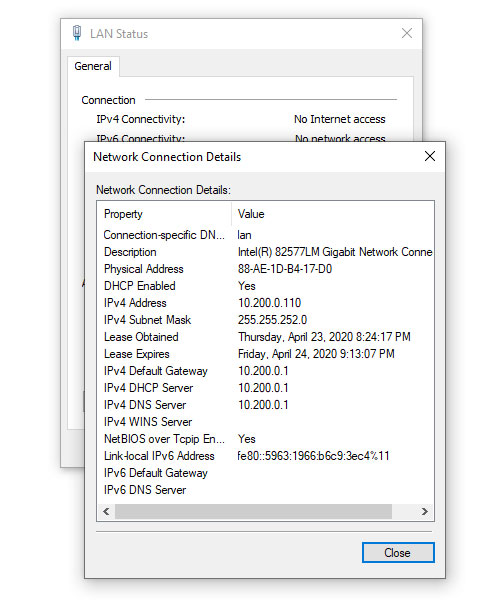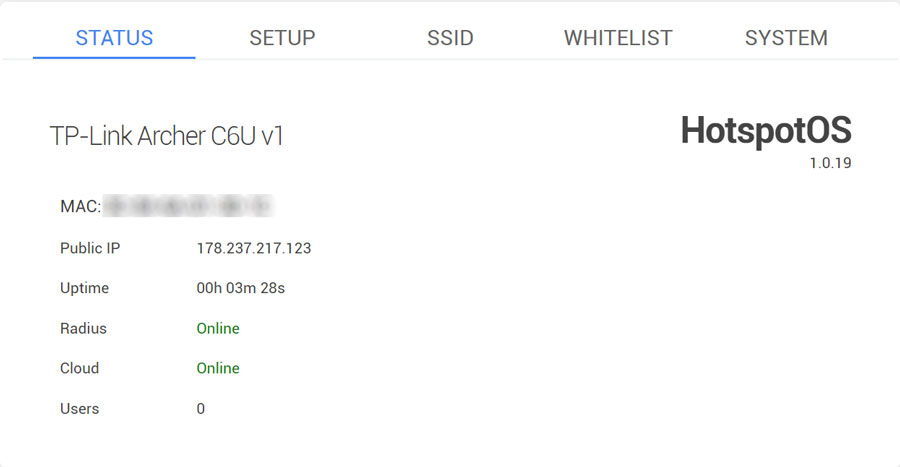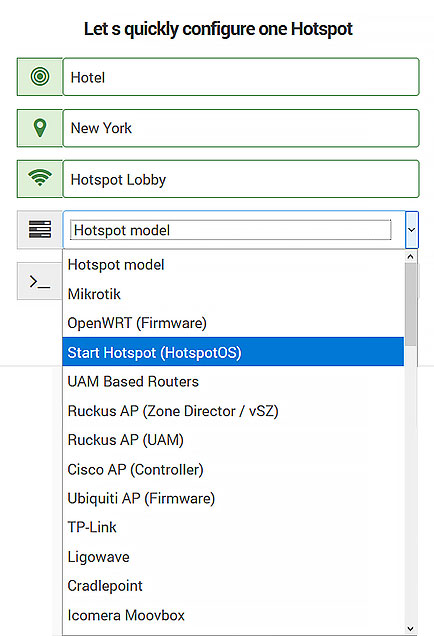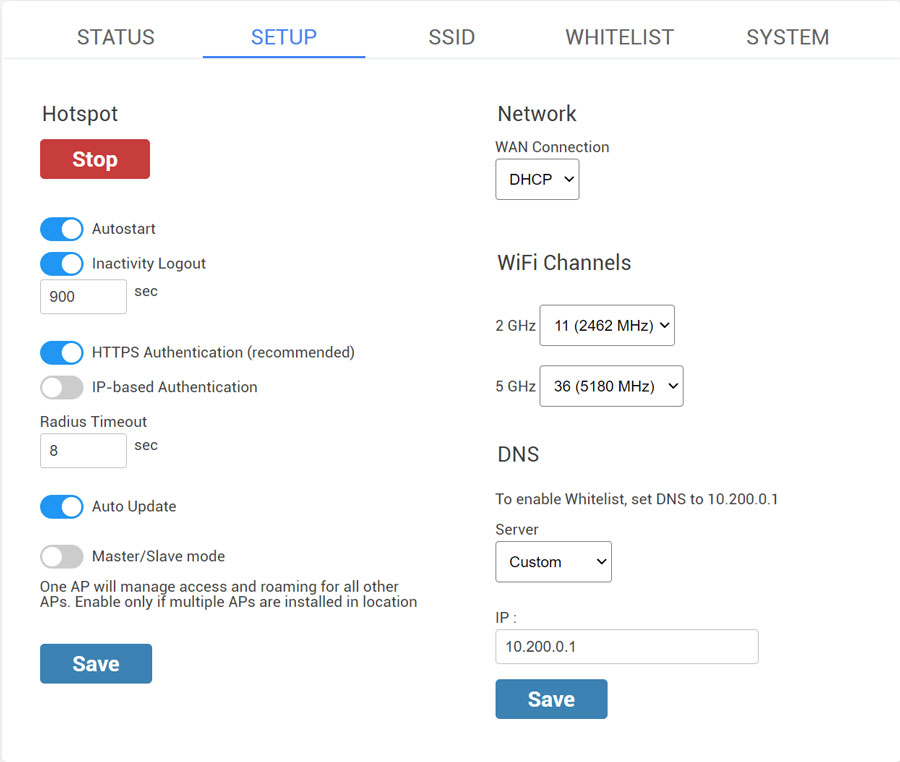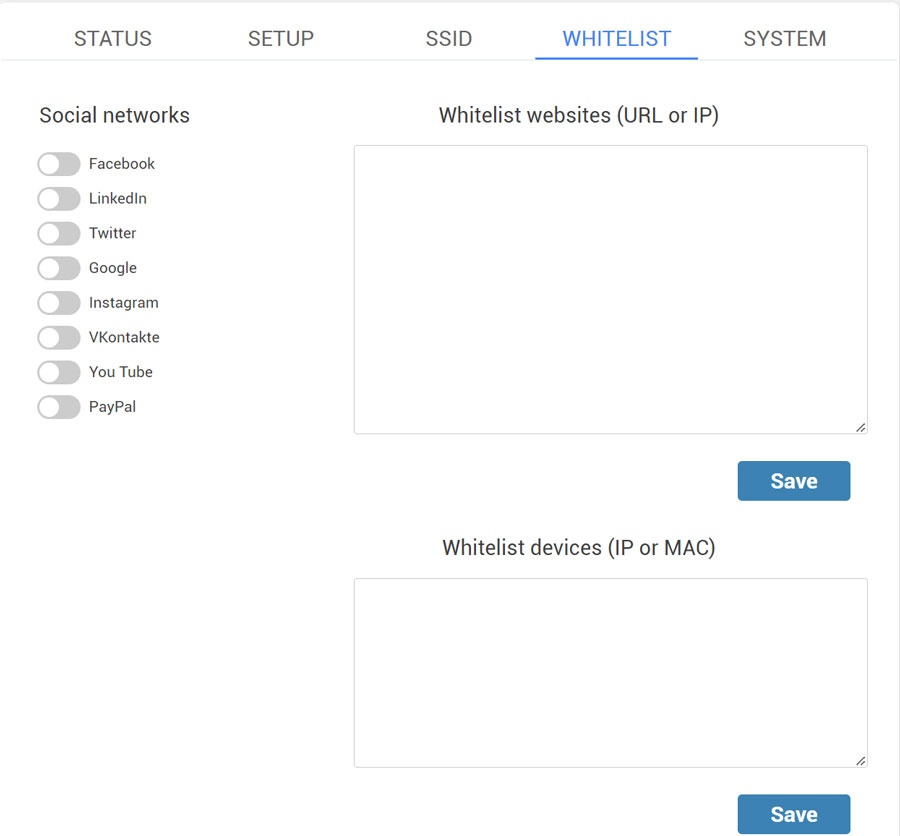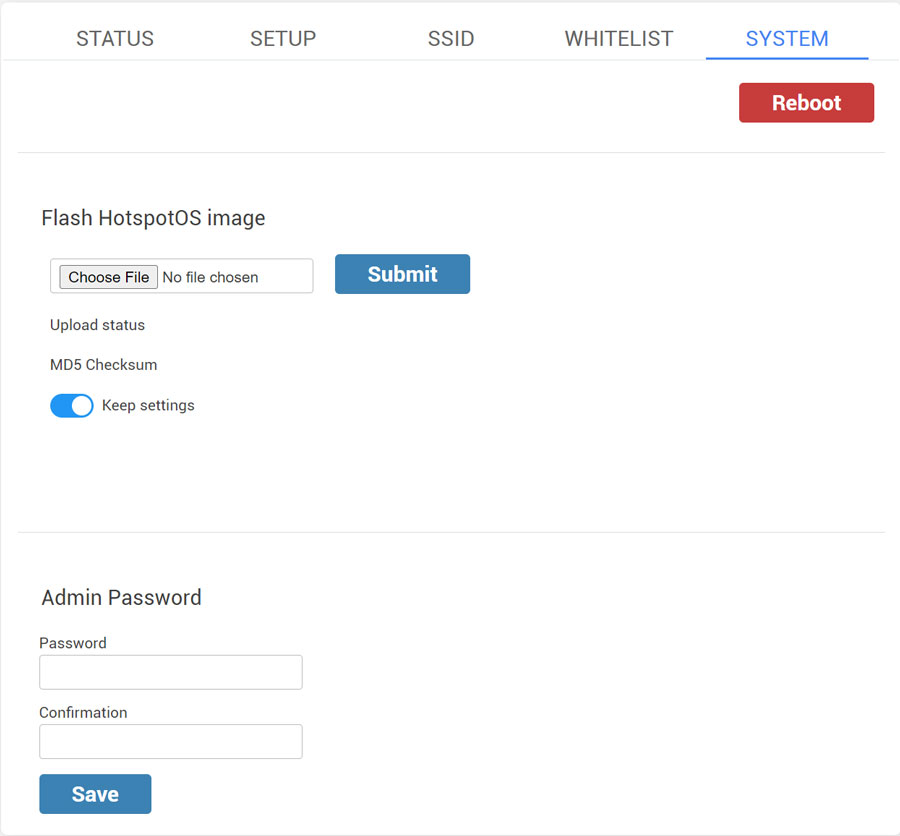Please select a model and download HotspotOS.
DownloadHotspotOSConfigurationTroubleshoot
Please reset the AP / WiFi router to factory settings to avoid problems with some previous configuration.
Connect your PC using a network cable to GL.iNet device.
Set the static IP address in 192.168.8.x range
In the address bar of the web browser, enter 192.168.8.1 and login.
Go to System / Firmware Upgrade section and press Choose File.
Navigate to the location where the HotspotOS for your model is downloaded and press on Open.
Press the Apply button.
The HotspotOS installation procedure can take a few minutes.
During this process, you will see information about the processing.
Reconnect LAN cable or Disable/Enable NIC card in order to get new valid IP address in 10.200.0.x range from router.
Start your browser and in URL field type http://10.200.0.1:8089/ to login to HotspotOS.
Username: admin
Password: admin
Press the Login button to access to Status tab.
On the HotSpotOS Status page, you can check AP MAC address, Public IP, device Uptime, Radius and Cloud status, and a number of users connected to AP.
The MAC address of your AP will be used in the SignUp process.
During SignUp, after typing HotSpot name, select as HotSpot model HotspotOS, and add your MAC address from the Status tab.
From the Setup page configure your AP.
The Hotspot is started and the Autostart and Inactivity Logout options are active by default.
Inactivity Logout is set to 900 sec. Inactivity period defines how long will the device stay logged-in without activity. This prevents repeated logins if the connection temporarily breaks.
IP-based Authentication is used to switch AP domain ap.wifihotspot.io to 10.200.0.1
It is recommended to disable this option to avoid issues with https-based websites.
Radius Timeout – 8sec
Auto Update – enabled
Master/Slave mode
One AP will manage access and roaming for all other APs.
Enable only if multiple APs are installed in a location.
By default as Network WAN Connection is set DHCP, but you can choose network protocol based on your needs. Our recommendation is to use DHCP Network Protocol.
WiFi channels – Eleven channels are designated in the 2 GHz range, spaced 5 MHz apart from each other. Those eleven channels in the spectrum are allowed anywhere in the world.
DNS – Custom
IP – 10.200.0.1
Save changes.
From the SSID tab, you can Enable SSID 1 and 2.
Configure the SSID name and enable it.
Secondary SSID 2 is mostly used for staff WiFi with WPA2 password but you can also enable Hotspot on it.
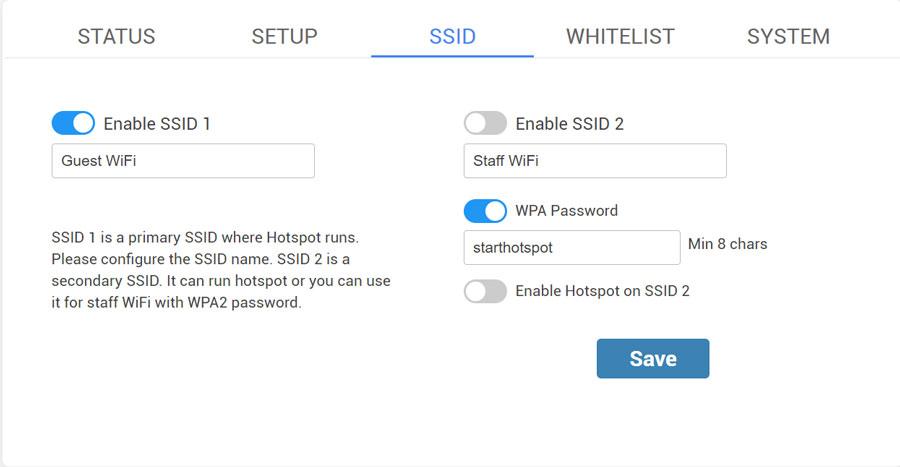
If you want to use Social network login feature or Paypal as payment gateway, enable it on the Whitelist tab and Save changes.
You can also whitelist websites based on URL, IP, or MAC.
From the System tab, you can flash HotspotOS image and change the Admin password.
When you finish setup, restart the AP / WiFi router to apply changes.
If you’re using a 3G/4G LTE device with SIM card slot, on the Setup page you can configure Wan Connection, Modems, Modem port, Modem Protocol and APN.
Please obtain APN, User and Password from your SIM Telecom provider.
GL.iNet HotspotOS Download
GL.iNet 6408A v1.0
Download HotspotOS
GL.iNet 6416A v1.0
Download HotspotOS
GL.iNet Domino Pi
Download HotspotOS
GL.iNet GL-AR150
Download HotspotOS
GL.iNet GL-AR300 v3
Download HotspotOS
GL.iNet GL-AR300M v1.4.0
Download HotspotOS
GL.iNet GL-AR300M-Lite v1
Download HotspotOS
Installation from OEM :
* Install sysupgrade.bin using OEM’s “Advanced” GUI (LuCI),
* Do not preserve settings
* Access rebooted device via Ethernet at HotspotOS default address
GL.iNet GL-AR750
Download HotspotOS
GUI or sysupgrade can be used to flash HotspotOS.
GL.iNet GL-AR750S v1
Download HotspotOS
GL.iNet GL-MiFi
Download HotspotOS
GL.iNet GL-USB150
Download HotspotOS
GUI or sysupgrade can be used to flash HotspotOS.
GL.iNet GL-X750 (Spitz)
Download HotspotOS
GL.iNet GL-B1300
Download HotspotOS
Method 1:
– use serial port to stop uboot
– uboot command: run lf
Method 2:
– push down reset button and power on
– wait until three leds constantly on then release
– upgrade by uboot web at https://192.168.1.1
Note:
– the HotspotOS image needs to be renamed to hotspotos-gl-b1300.bin in both methods.
– the HotspotOS image can be automatically downloaded if TFTP server at
192.168.1.2 have that file.
– the wifi led will be flashing when writing image.
GL.iNet GL-MT300A v1.3
Download HotspotOS
GL.iNet GL-MT300N v1
Download HotspotOS
GL.iNet GL-MT300N v2
Download HotspotOS
Installation through bootloader webserver:
– Plug power and hold reset button until red LED blink to bright.
– Install HotspotOS image using web interface on 192.168.1.1.
GL.iNet GL-MT750
Download HotspotOS
GL.iNet VIXMINI
Download HotspotOS
Installation via web-interface
1. Visit the web-interface at 192.168.8.1
Note: The ethernet port is by default WAN. So you need to connect to the router via WiFi
2. Navigate to the Update tab on the left side.
3. Select “Local Update”
4. Upload the HotspotOS image.
Note: Make sure you select not to preserve the configuration.
Installation via U-Boot
1. Hold down the reset button while powering on the device.
Wait for the LED to flash 5 times.
2. Assign yourself a static IPv4 in 192.168.1.0/24
3. Upload the HotspotOS image at 192.168.1.1.
Glinet Microuter N300
Download HotspotOS

 GL.iNet
GL.iNet